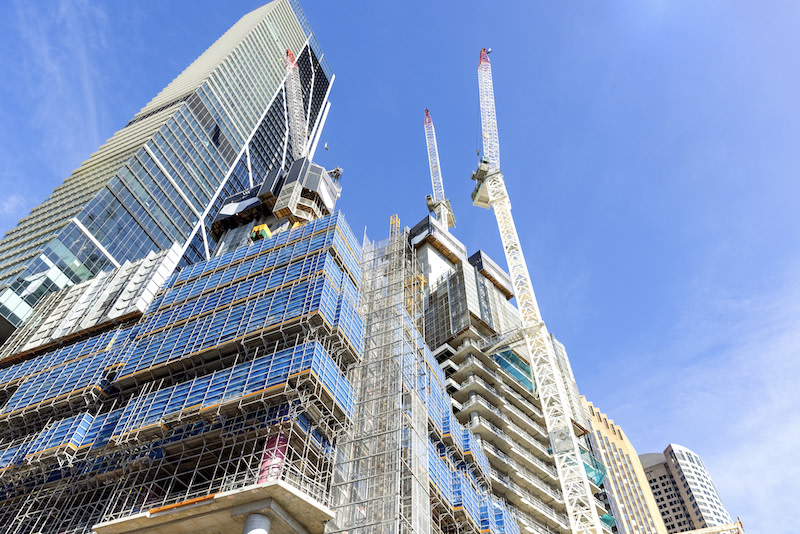Inflation Index Rises as Construction Slides Again

Annual inflation climbed again in April, clouding the prospects of interest-rate relief for Australian borrowers.
The monthly Consumer Price Index edged up 0.1 of a percentage point to 3.6 per cent for the year to April, Australian Bureau of Statistics data showed yesterday.
The indicator went up the same amount in March, showing inflation trending up rather than down as the Reserve Bank of Australia wants and inching further away from its target band of 2-3 per cent.
Australia’s central bank began a raising cycle in May 2022, lifting its cash rate from 0.1 per cent to 0.35 per cent. Twelve increases later it paused at 4.35 per cent.
The CPI peaked at 7.8 per cent in December 2022 and then fell steadily before hitting its recent resistance.
Market expectations were for a 3.4 per cent reading in April and the Australian sharmarket reacted badly to the surpise uptick, with the ASX200 index plunging 101.1 points [1.3 per cent] to close at 7665.60 on May 29.
ABS head of prices statistics Michelle Marquardt said inflation had been relatively stable over the past five months.
The most significant contributors to the April annual rise were housing (4.9 per cent), food and non-alcoholic beverages (3.8 per cent), alcohol and tobacco (6.5 per cent), and transport (4.2 per cent).
“CPI inflation is often impacted by items with volatile price changes like automotive fuel, fruit and vegetables, and holiday travel,” Marquardt said,
“When excluding these volatile items from the monthly CPI indicator, the annual rise to April was steady at 4.1 per cent. Annual inflation excluding volatile items remains higher than for the monthly CPI indicator.”
Housing rose 4.9 per cent in the 12 months to April, down from 5.2 per cent in March, while rents increased 7.5 per cent for the year, reflecting a tight rental market and low vacancy rates across the country, the ABS said.
New home prices rose 4.9 per cent over the year with builders passing higher costs for labour and materials onto the consumer.
Annual price growth for new homes has been around 5 per cent since August, 2023.
Electricity prices rose 4.2 per cent in the 12 months to April. The introduction of the Energy Bill Relief Fund rebates from July, 2023 has mostly offset electricity price rises from annual price reviews in July, 2023 due to higher wholesale prices.
“Excluding the rebates, electricity prices would have risen 13.9 per cent in the 12 months to April, 2024,” Marquardt said.
Transport prices rose 4.2 per cent mainly due to higher fuel prices compared to April last year. Automotive fuel rose 7.4 per cent in the 12 months to April, following an 8.1 per cent annual rise to March.
“Fuel prices rose 2.2 per cent in April, the third consecutive monthly rise, reflecting higher wholesale fuel prices,” Marquardt said.

Construction index falls
Meanwhile, the ABS reported that the amount of total construction work done had fallen by 2.9 per cent to $64.033 billion across the March quarter.
Of that, building work was down 3.7 per cent to $33.31 billion and engineering work declined 2.1 per cent to $30.72 billion.
This follows a rise in total construction work done of 0.7 per cent to $65.44 billion in the December quarter.
The decrease in building work was driven by a fall in non-residential building work, which decreased by 7 per cent in the March quarter and is 0.9 per cent lower than at the same time last year, according to the ABS.
Residential building work fell 1.2 per cent in the quarter, 2.8 per cent lower than at the same time last year.
Oxford Economics Australia economist Michael Dyer said the slip in residential building activity was marginally below expectation, pointing to the recent weakness in new home demand compounding the prolonged drag from capacity constraints.
Trade labour shortages remained a central issue, he said, while construction vacancies had softened, but remain elevated at a level nearly 70 per cent above the pre-pandemic base.
“Meanwhile, bottlenecks continue towards the fitout stage at which a lot of value is put in place. This is slowing the rollover on to new projects and contributing to the challenges being faced in terms of housing supply,” Dyer said.
“Approvals appear to have reached the bottom of the cycle.
“Nonetheless, any improvement from here is likely to be subdued through 2024 with the negative pass-through of higher interest rates to dwelling construction still having a bit more to go.”
Dyer said the backlog of work was clearing but remained elevated with the volume of houses under construction still running around 50 per cent above the long-run average.
“Efforts to clear this will inevitably place a floor under activity through 2024, offsetting the headwinds of higher interest rates, delays, and cost escalation on new dwelling demand.”
















